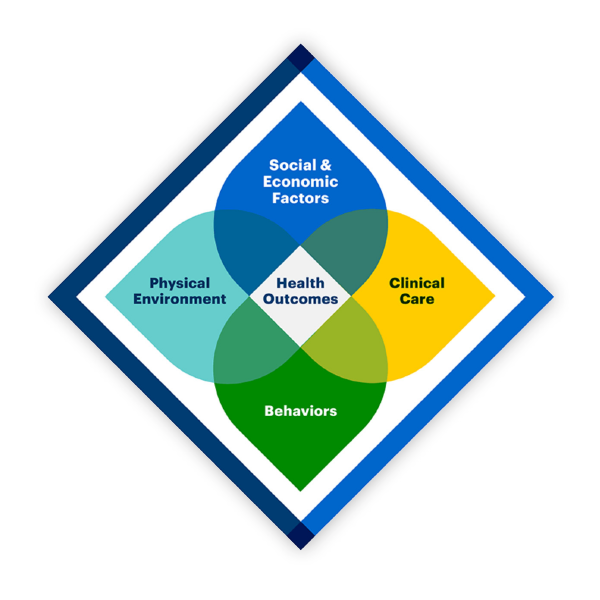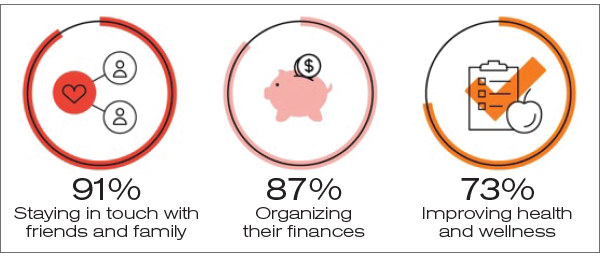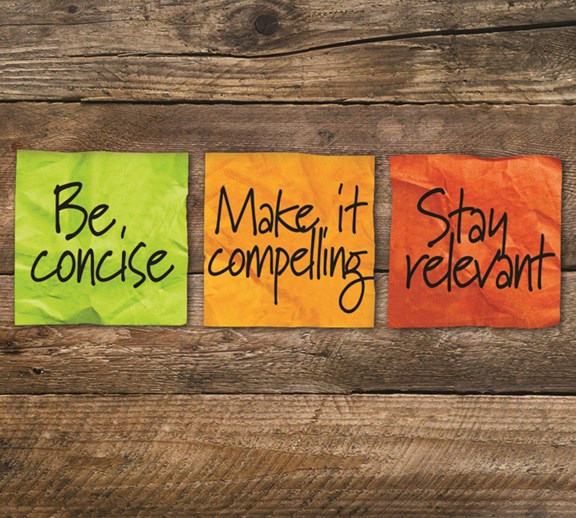Making a connection: How to reach the 65+ demographic
Written by: Kris Maule, Strategist, Customer Engagement Group
(View Author Bio)
With 55.6 million adults aged 65 and older in the U.S., making up almost 17% of the total population1, this demographic continues to be a valued part of American society and of course, continues to have a lot of buying power.

To reach older adults, we recommend letting go of old stereotypes. Rather than sitting in rocking chairs on the front porch as the world goes by, today’s older adults are active and engaged in their communities. In developing loyalty programs or behavior change initiatives for this audience, it’s important to acknowledge current lifestyles—and how they see themselves.
____________________
According to AARP Foundation President Lisa Marsh Ryerson,
“Older adults are living longer, healthier and more productive lives. They are a wonderful resource, contributing talent, wisdom and enormous economic value to our society.”
____________________
Digital seniors
Older adults are more connected and tech savvy than we give them credit for, yet highly underrepresented in digital marketing outreach. In 2019, more than half of older adults bought a new tech product such as a smartphone, laptop, or smart home device.2 And the tools aren’t just for show. Roughly 75% of older adults with an internet connection say they use it daily.3
These digital seniors go online for a number of reasons from staying in touch with friends and family (91%) to organizing their finances (87%) and improving their health and wellness (73%).4
____________________
A majority of online seniors spend at least six hours a day online and own an average of five devices.
____________________
Tips for designing behavior change and brand loyalty programs aimed at older adults:
Reach them where they are — with a multitouch approach
Develop a combination of digital and direct mail communication to initially engage your audience and to continue engagement over time.
Personalize each touch point — Deliver engaging, direct and relevant information to each individual audience member. End each piece with a clear call to action.
Entice them visually — Use vivid design and images that reflect how older adults see themselves — as active and thriving members of society.
Make your programs user friendly — Design interactions that are easy to understand, fun and leave audiences feeling the program is worthwhile.
- To drive behaviors, include content like videos and digital interfaces that use game mechanics.
-
Break complex content into easily consumed bite-sized pieces.
-
Engage the power of positivity to design behavior-change activities.
Embrace the power of positivity — Laura Carstensen, Ph.D., a psychology professor and director of the Stanford Center on Longevity at Stanford University, illustrated the impact of the “positivity effect”5 on older adults in a study comparing the memory recall of younger and older adults.
When shown a variety of positive and negative images, the older adults recalled far more of the positive photos than the younger participants did.
In another study on whether older adults might be motivated to exercise more after encouragement with positive messaging, Carstensen found that positively-framed messages more effectively promoted walking than negatively-framed messages, and the effect was sustained across the intervention period.6
According to Carstensen, the idea is that informing older people about the potential benefits of walking may be more effective than warning them about the risks of inactivity. As a result, Carstensen suggests that preferences for positive information among older adults may be useful in designing effective interventions to promote healthy lifestyles.
Keep them active in their communities — Social connection is a fundamental human need — as essential to survival as food, water and shelter. Acknowledge this in your programming.
Deliver content that speaks to the benefits of social connection and encourages both face-to-face interaction and digital engagement. This can be done by:
-
Sharing content about available volunteer opportunities in local communities
-
Designing reward options around in-person experiences like cooking classes or local tours
-
Providing information about community resources available to avoid loneliness.
____________________
“Social isolation among older adults accounts for an estimated $6.7 billion in excess Medicare spending annually, largely due to increased hospital and nursing facility spending.”7
____________________
Focus on relationships — Older adults tend to value their relationships, grow more selective in everyday choices and pursue goals that prioritize emotional meaning. Show you value older adults’ time, attention and loyalty to cultivate emotional connection and nurture engagement.
Make it worth their while — Demonstrate clearly what is in it for them to drive participation and change. Make sure to offer rewards intended for your audience, not their care givers.
Focus on health care — As 17% of the U.S. population, older adults account for 43% of total health care spending.8 A lot of this spending goes toward managing chronic conditions, an issue for 95% of older adults.9 Most of these chronic conditions could be managed or prevented by encouraging positive behavior change. A focus on healthy behaviors is likely to get this audience’s attention. Such practices could improve overall health outcomes, reduce health costs and improve patient satisfaction with both providers and payers.
Examples of clinical behaviors to target:
-
Device/medication adherence
-
Annual wellness visits
-
Chronic condition management
-
Gap closures
Examples of active health management (Stars & CAHPS/HOS) behavior-related content:
-
Plan benefit explanations
-
Healthy living tips
-
Social determinants of health (SDOH)
-
Social isolation remedies
Developing healthy behaviors in senior populations is critical to driving better overall health outcomes.
Older adults continue to be an important demographic to focus on for many leading U.S. companies. There’s a real opportunity to make a difference to both this audience and the businesses they engage with by reflecting the audience’s current lifestyles and values. Let go of outdated stereotypes and embrace the thriving, active roles older adults take in their communities. Integrate positive messaging into brand loyalty and behavior change programs to make the highest impact.

1. Vespa J, Medina L, Armstrong D, “Demographic turning points for the United States: population projections for 2020 to 2060,” Census.gov. Published February 2020. Accessed May 10, 2023. https://www.census.gov/library/ publications/2020/demo/p25-1144.html
2. Redding M. Technology for seniors. Seniorliving.org. Published April 26, 2023. Accessed May 10, 2023. https://www.seniorliving.org/tech/#resources
3. Anderson M, Perrin A. Barriers to adoption and attitudes towards technology. Pewresearch.org. Published May 17, 2017. Accessed May 10, 2023. https://www.pewresearch.org/internet/2017/05/17/barriers-to-adoption-and-attitudes-towards-technology/
4. Think with Google.com Google/Known, U.S., Digital Seniors, n=4,415 A55+, 2020 as shown in Twohig K. Why marketers’ picture of seniors is getting old. Thinkwithgoogle.com. Published July 2021. Accessed May 10, 2023. https://www.thinkwithgoogle.com/consumer-insights/consumer-trends/digital-seniors/
5. White T. As you get older you get happier. No, really. Sm.stanford.edu. Published Spring 2008. Accessed May 10, 2023. https://sm.stanford.edu/archive/stanmed/2008spring/the_positivity_effect.hml
6. Notthoff N, Carstensen LL. Positive messaging promotes walking in older adults. Psychol Aging. 2014 Jun;29(2):329-341. doi: 10.1037/a0036748. PMID: 24956001; PMCID: PMC4069032. Accessed May 10, 2023. https://www.ncbi. nlm.nih.gov/pmc/articles/PMC4069032/
7. Flowers L, Houser A, Noel-Miller C, et al. Medicare spends more on socially isolated older Americans. Washington, D.C.: AARP Public Policy Institute: Published November 2017. Accessed May 10, 2023. chrome-extension://efaidnbmnnnibpcajpcglclefindmkaj/https://capitolhillvillage.org/w content/ uploads/2018/11/medicare-spends-more-on-socially-isolated-older- adults.pdfchrome-extension://efaidnbmnnnibpcajpcglclefindmkaj/https://capitolhillvillage.org/wp-content/uploads/2018/11/medicare-spends-more-on- socially-isolated-older-adults.pdf
8. Ortaliza J, McGough M, Wager E, Claxton G, Amin K. How do health expenditures vary across the population? Healthsystemtracker.org. Table: Share of total health spending by age group, 2019 Published November 12, 2021. Accessed May 10, 2023. https://www.healthsystemtracker.org/chart-collection/health-expenditures- vary-across-population/#Proportion%20of%20individuals%20by%20health%20 status,%202019
9. National Council on Aging. Get the facts on healthy aging. Ncoa.org. Published March 13, 2023. Accessed May 10, 2023. https://www.ncoa.org/article/get-the- facts-on-healthy-aging
The best way to get started is to get in touch.



















